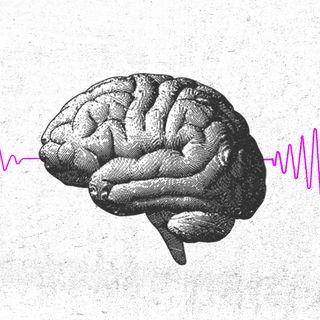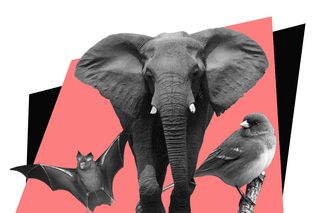
Birds, Other Animals Are ‘Shapeshifting’ to Adapt to Global Warming
Animals are evolving to survive — but researchers are not sure “all species are capable of changing and surviving.”

In the age of climate crisis, survival isn’t easy. Some warm-blooded animals, like birds and elephants, are responding to this reality by changing the size of their appendages, according to a new analysis. That is, some may evolve to have bigger beaks, tails, or legs in the future.
Warm-blooded animals, including humans and birds, maintain a constant internal body temperature. They regulate the temperature through these appendages to adapt to extreme climates. If animals fail to control this, however, they can overheat and die.
This makes climate change disruptive for animals in multiple ways. Some move to cooler climates; some change the timing of their breeding and migration; others evolve to change body sizes to cool down. The research, published in Trends in Ecology and Evolutionon Tuesday, shows how some warm-blooded animals change the size of their legs, ears, tails, beaks, and other parts to regulate their body temperatures. Historically, some animals have evolved to have larger beaks or ears to get rid of heat; these changes are becoming more pronounced with a warming climate.
The researchers looked at existing research of appendage sizes in more than than 30 animals. The “shape-shifters” responded to a common pattern of fundamental changes in their form. The most notable difference so far was observed in some birds. The Australian parrot species, for instance, saw their beak size increase by 4% to 10% since 1871. The bill size of the North American dark-eyed juncos (a type of small songbird) was linked to shorter durations of a cold environment. Wood mice reportedly had longer tail lengths; bats in warm climates were growing to have increased wing sizes.
Naturally, the shifts are too small to be increasingly noticeable. So far, the change in sizes of tails, beaks, and other parts is less than 10%. “However, prominent appendages such as ears are predicted to increase, so we might end up with a live-action Dumbo in the not-so-distant future,” Sara Ryding and Matthew Symonds, researchers at the Deakin University and co-authors of the paper, noted in The Conservation.
Related on The Swaddle:
Climate Crisis Is Causing Male Dragonflies to Lose Wing Color That Helps Them Mate: Study
How animals use appendages to regulate body temperatures is a pattern understood through Allen’s rule. In the 1870s, American zoologist Joel Allen noticed warm-blooded animals tended to have smaller appendages in colder climates; they had larger appendages in warmer climates. The advantage of having say, a bigger beak or ears, is that the larger size helps to disperse warmth when animals’ bodies overheat. Beaks, for instance, are not insulated and become a site of heat exchange; the blood flow is diverted to the bill when the bird is hot, which renders the beak warmer than the rest of the body. Similarly, ears, tails, and legs in mammals allow easy dispersal.
This pattern is noticed in several studies of birds and mammals. “African elephants, for example, pump warm blood to their large ears, which they then flap to disperse heat,” the researchers noted. In the present analysis, birds with smaller beaks were less likely to survive hotter climates.
Allen’s rule has helped researchers identify biological patterns in the past. Experts believe this trend can also be useful in predicting changes in animals as the climate warms. “These include (with some caveats) starlings, song sparrows, and a host of seabirds and small mammals, such as South American gracile opossums,” the study notes.
This shapeshifting is happening in myriad ways currently; animals with different appendages may grow and change globally. How larger beaks or tails may impact the animal is something the researchers plan to study in the future.
For now, however, evidence of evolution is not necessarily a comforting finding. “It means animals are evolving, but it does not necessarily mean that they are coping with climate change. We can see that some species have increased in appendage size so far, but we don’t know if they will be able to keep up as the climate crisis worsens,” Sara Ryding told CNN. It is possible some animals may not be able to evolve in time.
Several studies, along with the latest report on climate impact by the International Panel on Climate Change, predict a sordid tale of extinction for many animal species. How Allen’s rule and climate warming impact animals can piece together a puzzle of sorts. Researchers can identify the tangible consequence of global warming, and also trace which species are most vulnerable to the changes, and redirect conservation policies.
Saumya Kalia is an Associate Editor at The Swaddle. Her journalism and writing explore issues of social justice, digital sub-cultures, media ecosystem, literature, and memory as they cut across socio-cultural periods. You can reach her at @Saumya_Kalia.
Related


Informing About Deadlines for Climate Action Is Effective, Not Alarmist: Study
